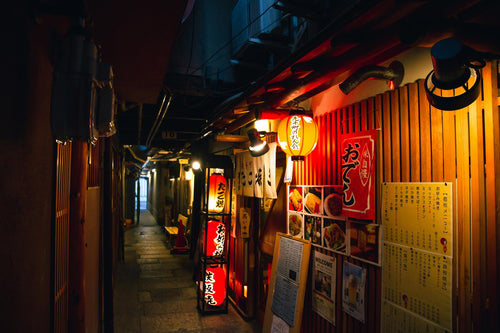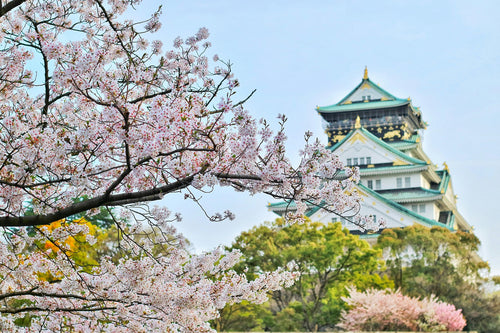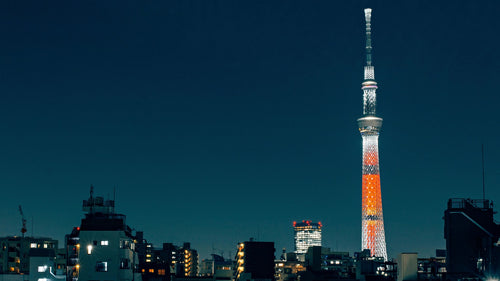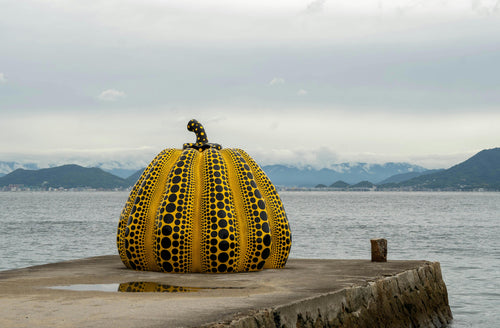
15 Famous Temples and Shrines to Visit near Tokyo
Tokyo and its surrounding areas are home to many famous temples and shrines that showcase Japan's rich spiritual and cultural heritage. These sacred sites, often nestled in tranquil settings, offer a peaceful escape from the bustling city. Whether you’re seeking architectural beauty, a bit of history, or a serene place to reflect, these temples and shrines are must-visits. Here’s a guide to 15 famous temples and shrines near Tokyo, each offering its own unique experience.
Contents
9. Kawagoe Kita-in Temple (Kawagoe)
11. Naritasan Shinshō-ji (Narita)
12. Taishakuten Daikyo-ji (Shibamata)
1. Sensō-ji (Tokyo)
As Tokyo's oldest temple, Sensō-ji in Asakusa is a vibrant and bustling temple with a history spanning over 1,300 years. The temple is dedicated to Kannon, the goddess of mercy, and is one of Tokyo’s most popular tourist spots. Visitors enter through the impressive Kaminarimon (Thunder Gate), followed by a lively shopping street, Nakamise-dori, which leads to the main temple hall. Here, visitors can buy traditional Japanese souvenirs and sample local snacks while taking in the rich cultural atmosphere.
Sensō-ji is famous for its seasonal festivals, with the Sanja Matsuri in May being one of the most significant. The temple is especially enchanting at night when it is beautifully lit, giving visitors a chance to enjoy a quieter, more contemplative experience.
Address: 2-3-1 Asakusa, Taito City, Tokyo 111-0032
Website: https://www.senso-ji.jp/
2. Meiji Jingu (Tokyo)
Located in a lush forest in Shibuya, Meiji Jingu is one of Tokyo’s most important Shinto shrines. Dedicated to Emperor Meiji and Empress Shoken, the shrine attracts visitors looking for peace amidst the city’s hustle. The surrounding forest, with over 100,000 trees from all over Japan, provides a serene atmosphere, making it ideal for relaxation and spiritual reflection.
Meiji Jingu is a popular spot for traditional Shinto weddings, and visitors may be lucky enough to witness a procession. Each New Year, millions flock here for hatsumode (first prayers of the new year). The shrine also has a lovely Inner Garden, featuring a beautiful iris garden that blooms in June.
Address: 1-1 Yoyogikamizonocho, Shibuya City, Tokyo 151-8557
Website: https://www.meijijingu.or.jp/
3. Zōjō-ji (Tokyo)
Located near Tokyo Tower, Zōjō-ji is a Buddhist temple with deep historical significance. As the family temple of the Tokugawa shogunate, Zōjō-ji played a crucial role in the Edo Period. The temple offers a beautiful blend of Tokyo's modern and ancient sights, as visitors can see Tokyo Tower towering over the temple grounds.
The temple grounds contain the tombs of six Tokugawa shoguns, and the statues dedicated to unborn children add a poignant touch to this serene place. The temple is also known for its stunning cherry blossoms in spring, making it a popular spot for hanami (flower viewing).
Address: 4-7-35 Shibakoen, Minato City, Tokyo 105-0011
Website: https://www.zojoji.or.jp/
4. Nezu Shrine (Tokyo)
One of Tokyo’s oldest Shinto shrines, Nezu Shrine is famous for its lush azalea gardens that bloom in spring. Located in the quiet Bunkyo Ward, this shrine is a stunning example of Edo-period architecture, with a series of red torii gates that create a picturesque pathway leading to the main shrine.
The annual Bunkyo Azalea Festival attracts visitors who come to admire the colorful blooms, making spring an especially beautiful time to visit. The serene pond and traditional wooden structures create a peaceful atmosphere, offering a refreshing break from city life.
Address: 1-28-9 Nezu, Bunkyo City, Tokyo 113-0031
Website: https://www.nedujinja.or.jp/
5. Nikkō Tōshō-gū (Nikkō)
Nikkō Tōshō-gū is a UNESCO World Heritage site and the final resting place of Tokugawa Ieyasu, the founder of the Tokugawa shogunate. This shrine in Nikkō is one of Japan’s most famous due to its opulent design and detailed carvings. Unlike most shrines, which are modestly adorned, Tōshō-gū’s elaborate design symbolizes the power of the shogunate.
Highlights include the Yōmeimon Gate, often called the "Gate of the Setting Sun" due to its beauty, and the famous "sleeping cat" and "three wise monkeys" carvings. Visiting Nikkō Tōshō-gū is not only a cultural experience but also a chance to explore the beautiful surrounding mountains and forests.
Address: 2301 Sannai, Nikkō, Tochigi 321-1431
Website: https://www.toshogu.jp/
6. Hase-dera (Kamakura)
Hase-dera Temple in Kamakura is well-known for its eleven-headed statue of Kannon, the goddess of mercy, which stands over 9 meters tall. The temple is built on a hillside, providing beautiful views of Kamakura Bay, and features a well-maintained garden filled with seasonal flowers. In summer, hydrangeas line the pathways, making it a popular destination for flower lovers.
The temple grounds include a small cave with statues of Buddhist deities, adding to its mystical atmosphere. Visitors can also find a peaceful spot to meditate or rest while admiring the temple’s landscaped garden and ponds.
Address: 3-11-2 Hase, Kamakura, Kanagawa 248-0016
Website: https://www.hasedera.jp/
7. Yakuō-in (Mount Takao)
Yakuō-in is a Buddhist temple located on Mount Takao, a popular hiking destination just outside Tokyo. Founded in 744, this temple honors the deity Tengu, known for his long nose and spiritual powers. The path to the temple is lined with cedar trees and offers scenic views, making it a rewarding journey for those who enjoy both hiking and cultural exploration.
The temple grounds are known for their Tengu statues and annual events, like the Tengu Matsuri. Yakuō-in is particularly beautiful in autumn when the leaves change color, adding a vibrant backdrop to this spiritual retreat.
Address: 2177 Takaomachi, Hachioji, Tokyo 193-0844
Website: https://www.takaosan.or.jp/
8. Engaku-ji (Kamakura)
Engaku-ji is one of the leading Zen temples in Kamakura and is famous for its peaceful gardens and historical treasures. Founded in 1282 by the regent Hojo Tokimune, the temple was built to honor warriors who had died in the Mongol invasions. It houses one of Japan’s National Treasures, a massive Buddha’s bell, and is surrounded by tranquil gardens ideal for meditation.
The temple’s seasonal beauty, with cherry blossoms in spring and vibrant maple leaves in autumn, makes it a perfect escape for those seeking calm and reflection. Engaku-ji also offers Zen meditation sessions for those interested in learning more about this Japanese practice.
Address: 409 Yamanouchi, Kamakura, Kanagawa 247-0062
Website: https://www.engakuji.or.jp/
9. Kawagoe Kita-in Temple (Kawagoe)
Kawagoe Kita-in Temple, located in the "Little Edo" of Kawagoe, is known for its beautiful architecture and unique collection of 500 Rakan statues, each with a different facial expression. Originally part of the Tendai sect, it has historical rooms from Edo Castle, offering visitors a glimpse into the shogunate era. The temple’s New Year’s celebration and Setsubun (bean-throwing festival) events are particularly famous.
The temple grounds also include a museum dedicated to showcasing the cultural history of Kawagoe and the Kanto region. Its connection to the Tokugawa family and the historic setting make Kawagoe Kita-in a popular day trip destination from Tokyo.
Address: 1-20-1 Kosenbamachi, Kawagoe, Saitama 350-0036
Website: https://kitain.net/
10. Kashima Jingu (Ibaraki)
One of Japan’s oldest Shinto shrines, Kashima Jingu in Ibaraki Prefecture dates back over 2,600 years. The shrine is dedicated to Takemikazuchi-no-Ōkami, the deity of martial arts, and is popular among those praying for protection and strength. Visitors can enjoy the peaceful atmosphere of its ancient cedar trees, some of which are said to be over 1,000 years old.
The shrine’s treasure hall contains artifacts dating back to the Heian period, making it a culturally significant destination. Kashima Jingu is also well-known for its traditional horseback archery events, adding a historical dimension to the visitor experience.
Address: 2306-1 Kyuchu, Kashima, Ibaraki 314-0031
Website: https://www.kashimajingu.jp/
11. Naritasan Shinshō-ji (Narita)
Naritasan Shinshō-ji Temple is a prominent Buddhist temple complex in Narita and one of the oldest in Japan, established over 1,000 years ago. The temple complex is home to a grand pagoda, beautiful gardens, and impressive sculptures. It is particularly popular among travelers using Narita Airport who wish to experience Japanese spirituality without venturing far from their point of arrival.
In January, the temple holds the Naritasan Fire Ritual, which attracts visitors from all over Japan. The peaceful grounds, adorned with seasonal flowers and intricate architecture, make this a beautiful and accessible destination.
Address: 1 Narita, Narita City, Chiba 286-0023
Website: https://www.naritasan.or.jp/
12. Taishakuten Daikyo-ji (Shibamata)
Taishakuten Daikyo-ji in Shibamata, Tokyo, is known for its intricate wood carvings and tranquil garden. Established in 1629, this temple has become a symbol of Shibamata’s old-town charm. The temple grounds contain a beautiful Japanese garden, making it a great place to relax and reflect after a stroll through the nostalgic streets of Shibamata.
Taishakuten is also famous for its connection to the popular Japanese film series *Otoko wa Tsurai yo*, featuring the character Tora-san, who is beloved in Japanese pop culture. For those interested in Japanese art, religion, and cinema, Taishakuten Daikyo-ji is a must-see.
Address: 7-10-3 Shibamata, Katsushika City, Tokyo 125-0052
Website: https://www.taishakuten.or.jp/
13. Hokoku-ji Temple (Kamakura)
Hokoku-ji Temple, also known as the Bamboo Temple, is renowned for its bamboo grove, which offers a serene, mystical atmosphere. Located in Kamakura, the temple is perfect for those seeking tranquility and a deep connection with nature. Visitors can enjoy matcha tea in a small tea house overlooking the bamboo forest, adding a meditative touch to the experience.
The temple’s quiet ambiance, combined with the beauty of the bamboo and seasonal flowers, makes it a popular destination for photographers and nature enthusiasts. In autumn, the grounds are especially beautiful with vibrant foliage adding to the temple's natural charm.
Address: 2-7-4 Jomyoji, Kamakura, Kanagawa 248-0003
Website: https://www.houkokuji.or.jp/
14. Ōyama-dera (Kanagawa)
Located on Mount Ōyama, Ōyama-dera is a Buddhist temple offering breathtaking views of the Sagami Bay area. This historic temple is reached via a scenic hike, and the path leading up to it is surrounded by vibrant greenery and waterfalls. The temple is particularly stunning during autumn when the trees surrounding it turn brilliant shades of red and orange.
Ōyama-dera also holds significance in Japanese folklore, being known for providing safety to travelers. Many visitors hike Mount Ōyama for its natural beauty and to visit the temple, making it a rewarding destination for both physical and spiritual exploration.
Address: 724 Oyama, Isehara City, Kanagawa 259-1107
Website: https://oyamadera.jp/
15. Jindai-ji (Chofu)
Jindai-ji, located in Chofu, Tokyo, is the second oldest temple in Tokyo after Sensō-ji and is renowned for its natural hot spring water, often used in purification rituals. The temple’s stone paths, quaint bridges, and beautiful water features create a peaceful, secluded ambiance that is especially charming during cherry blossom season.
Jindai-ji is also famous for its connection to soba (buckwheat noodles), and many visitors enjoy a bowl of freshly made soba at one of the surrounding restaurants. The temple regularly hosts festivals and flea markets, making it a lively yet serene place to visit year-round.
Address: 5-15-1 Jindaiji Motomachi, Chofu, Tokyo 182-0017
Website: https://www.jindaiji.or.jp/
Each of these temples and shrines offers a unique experience and insight into Japan's rich spiritual and historical landscape, providing unforgettable experiences for those looking to explore Tokyo’s cultural heritage.
Share
You may also like
-

How to Enjoy a Night at a Japanese Izakaya
Japanese izakayas are casual, lively spots where locals gather after work to enjoy drinks, share small plates, a...
-

Top 7 Cherry Blossom Viewing Locations in Tokyo
Springtime in Tokyo is synonymous with the cherry blossom season, a breathtaking period when the city’s parks, rivers...
-

Top 6 Observation Decks in Tokyo for Scenic Views
Tokyo’s observation decks offer some of the best panoramic views of the city, giving visitors a chance to see th...
-

Japanese Art Exploration: Best Spots to Enjoy Art in Japan
Japan is a country rich in artistic heritage, from centuries-old traditional crafts to modern, innovative instal...
There are currently no related posts.




